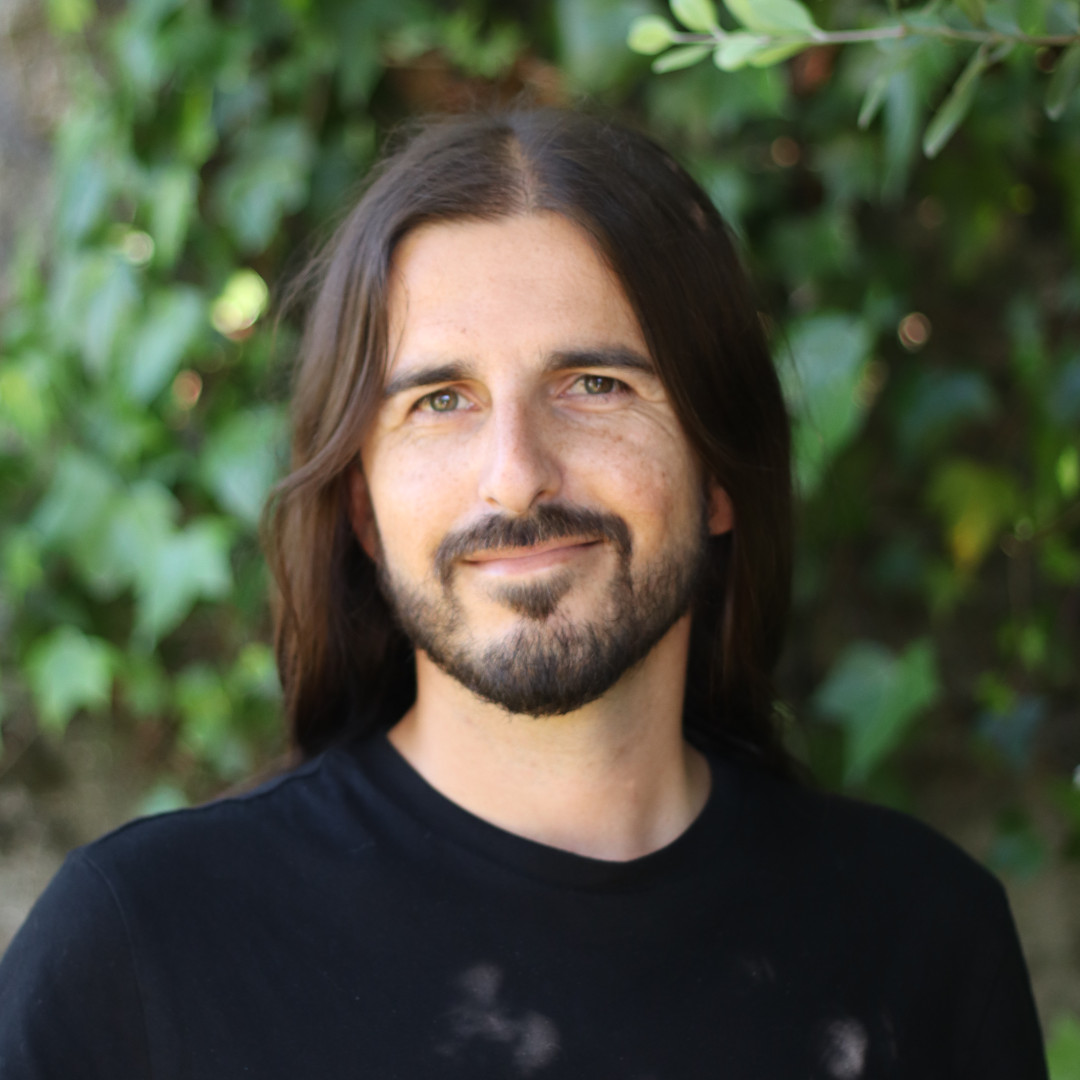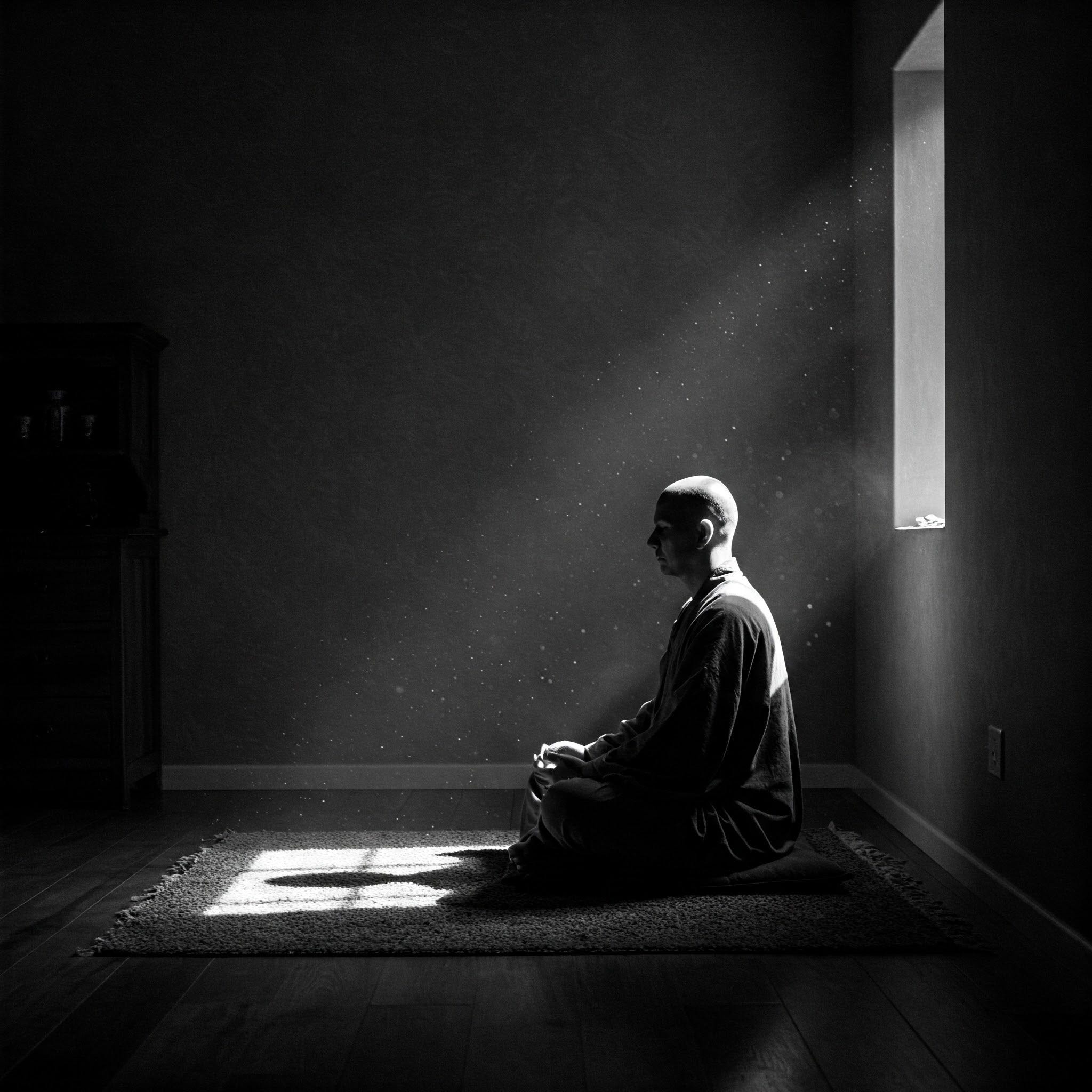Quem Conta um Conto Acrescenta um Som
Earlier this year, in May 2024, I had the pleasure of directing Quem Conta um Conto Acrescenta um Som, a concert for a very young audience - children aged three months to six years - based on traditional portuguese music. It was commisioned by Casa da Música’s Education Service, and developed in collaboration with my team, Digitópia. We went back on stage (Casa da Música’s Sala 2) in October 2024, for a total of 10 shows (5 in May, 5 in October), for around 2 500 people in total. I was very fortunate to work with a host of great artists. Here’s everyone:
Filipe Fernandes, on the guitar, percussion and backing vocals
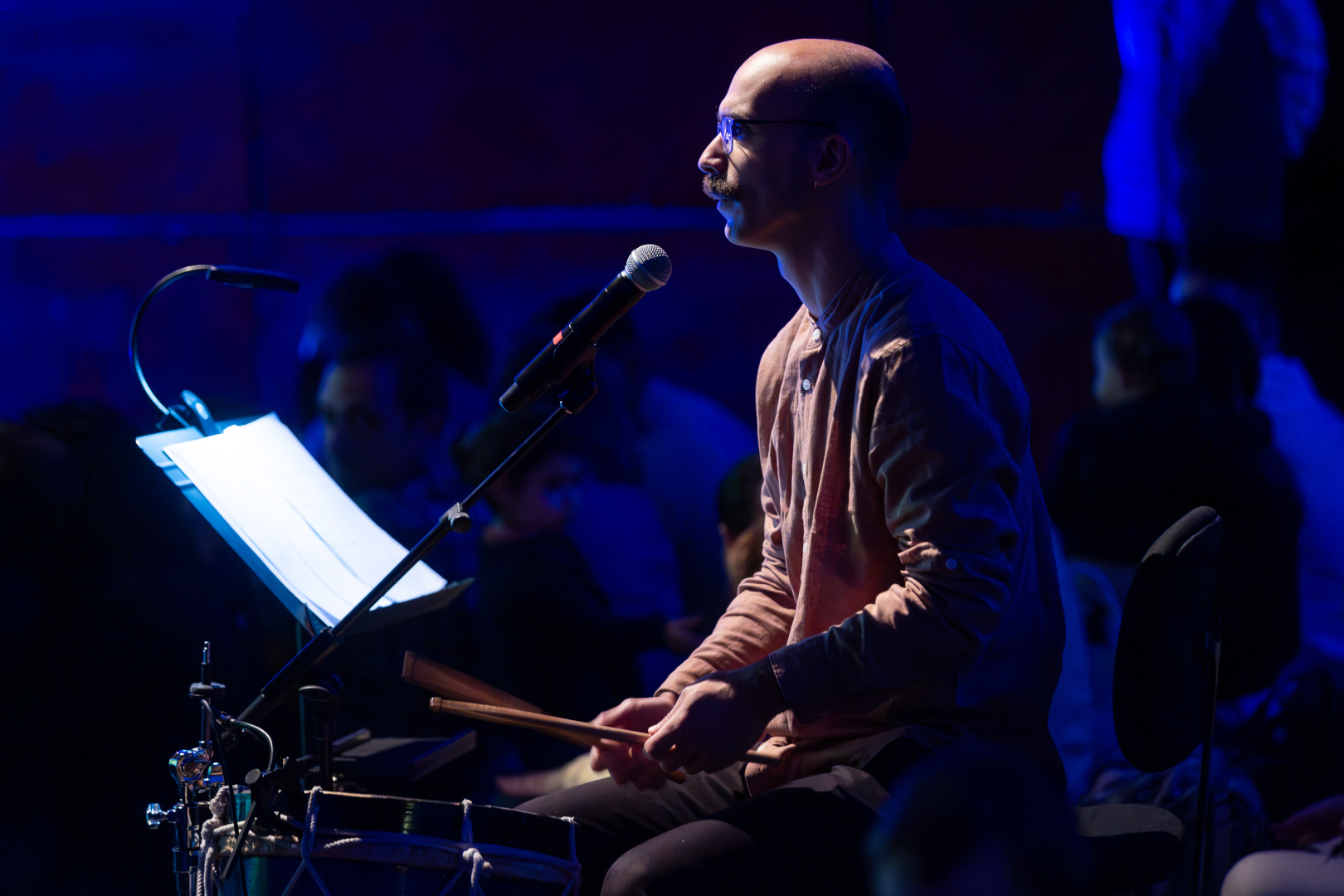
João Diogo Leitão, on the viola braguesa (a traditional portuguese guitar), percussion and backing vocals
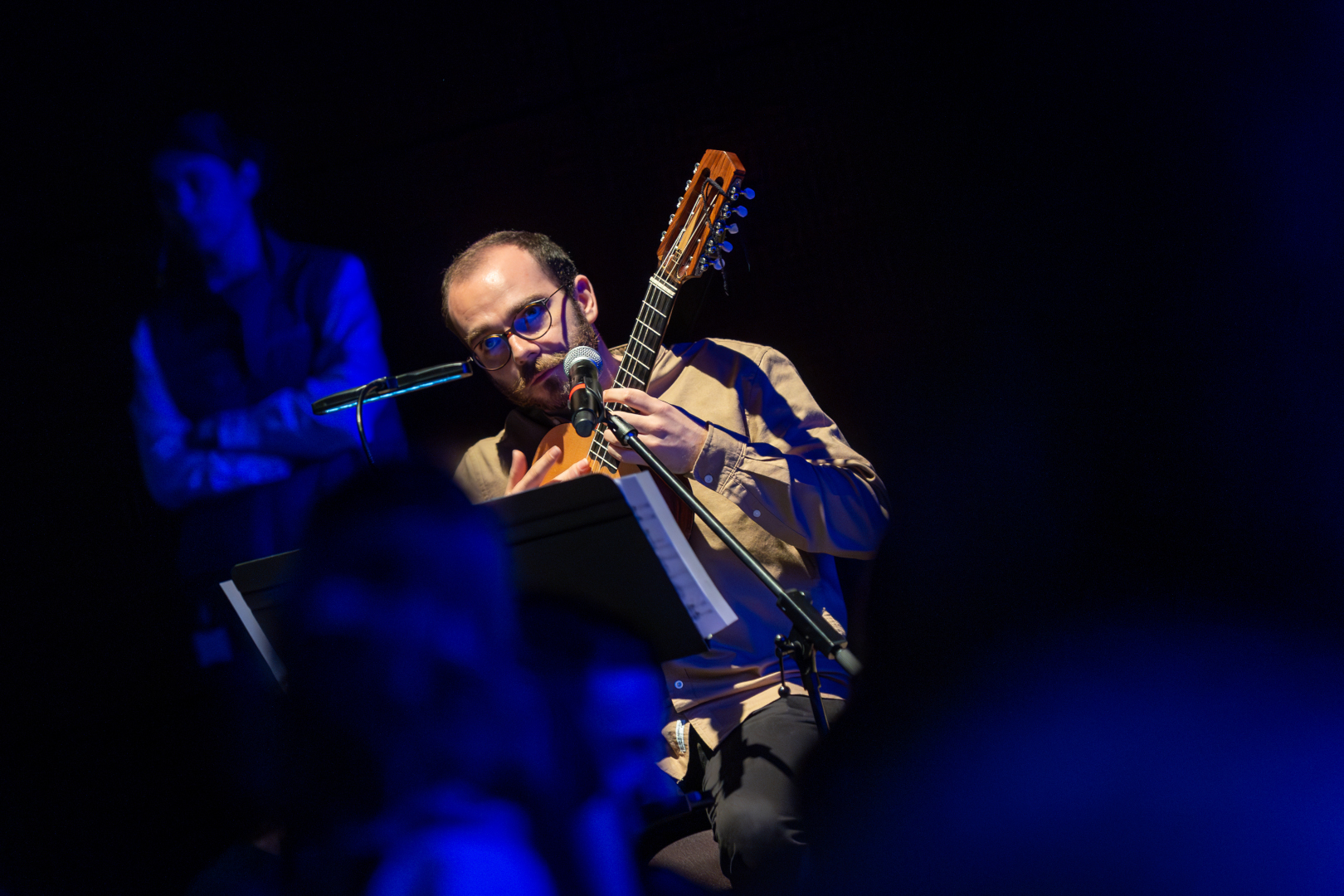
Miguel C. Tavares, on live video
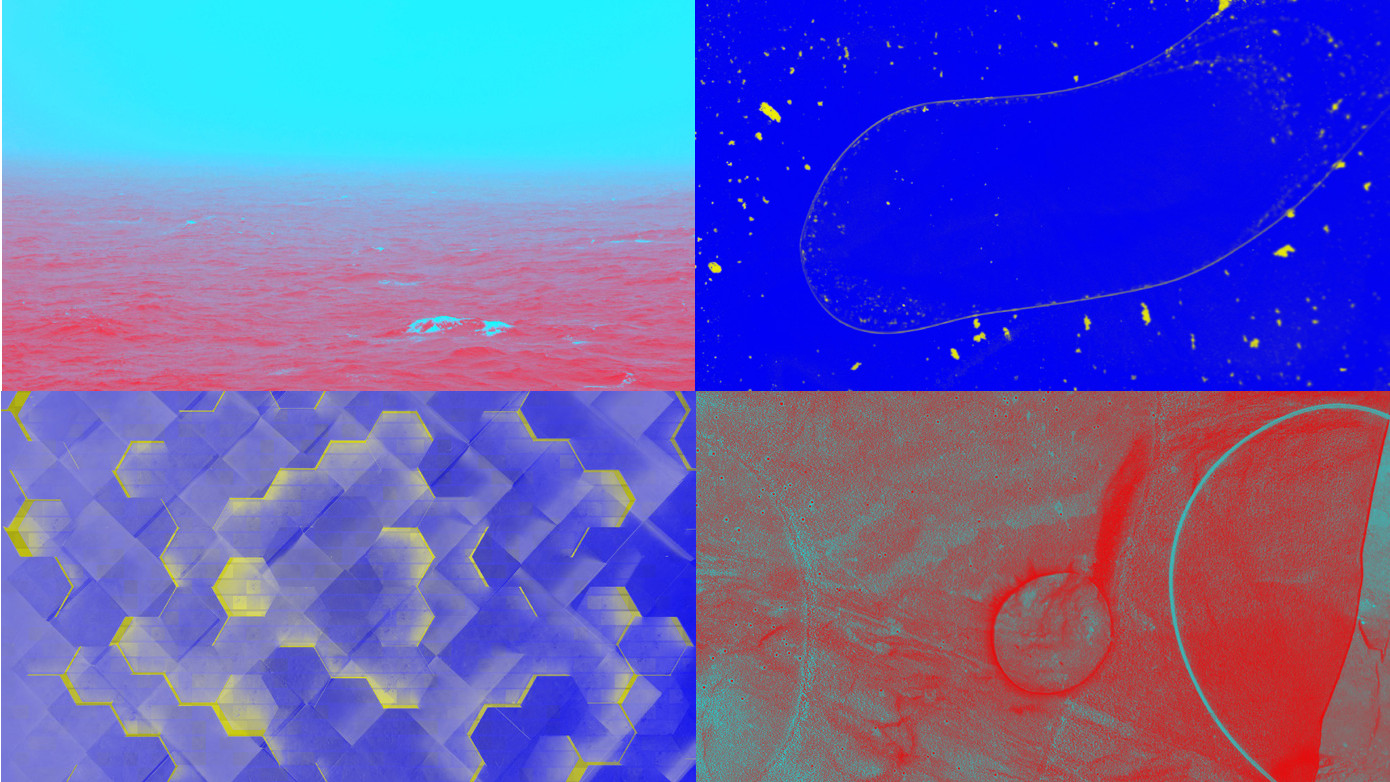
Óscar Rodrigues, on the electric guitar, electric bass, synth, percussion and backing vocals
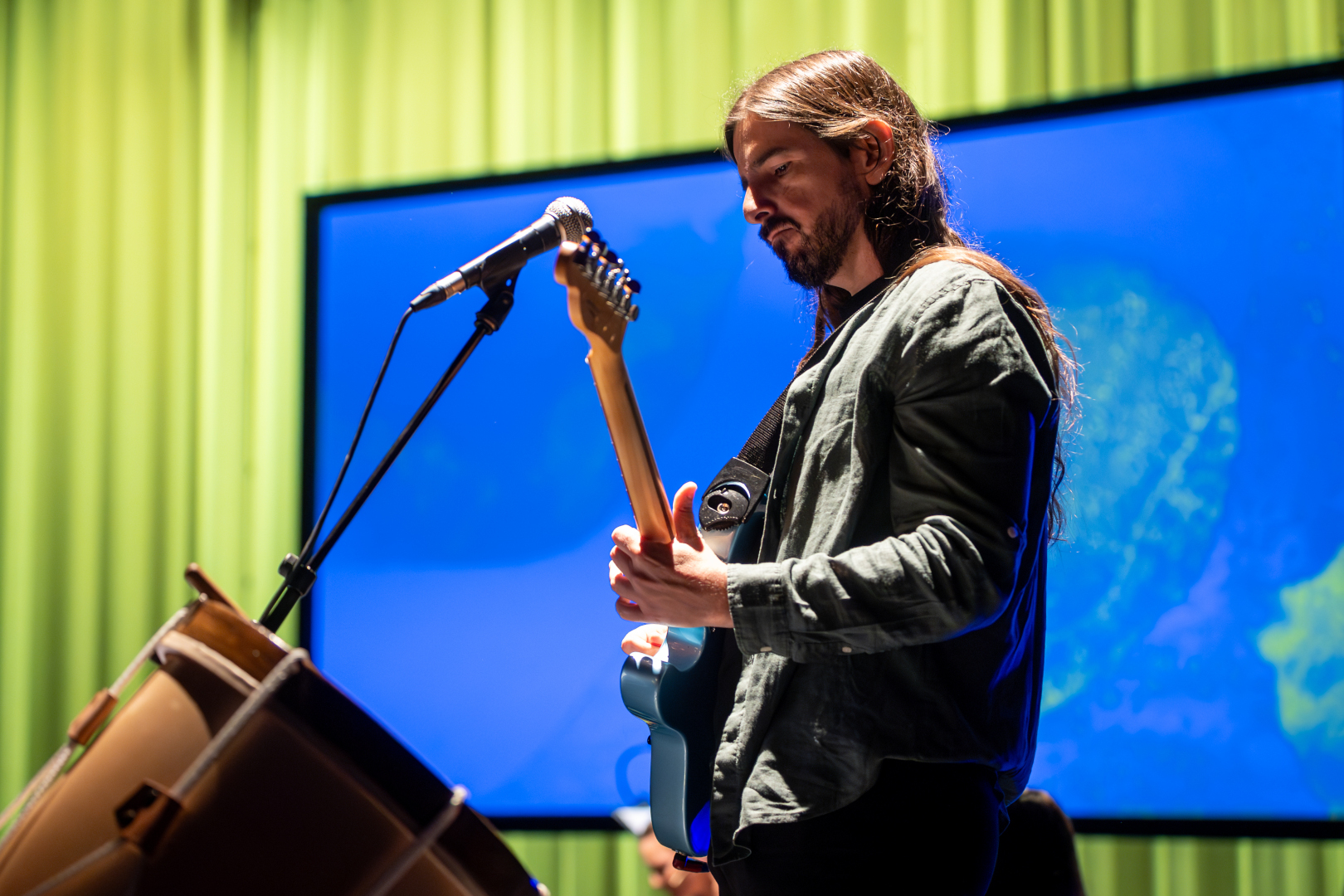
Ricardo M. Vieira, on the keyboards, triggering the electronics, percussion and backing vocals
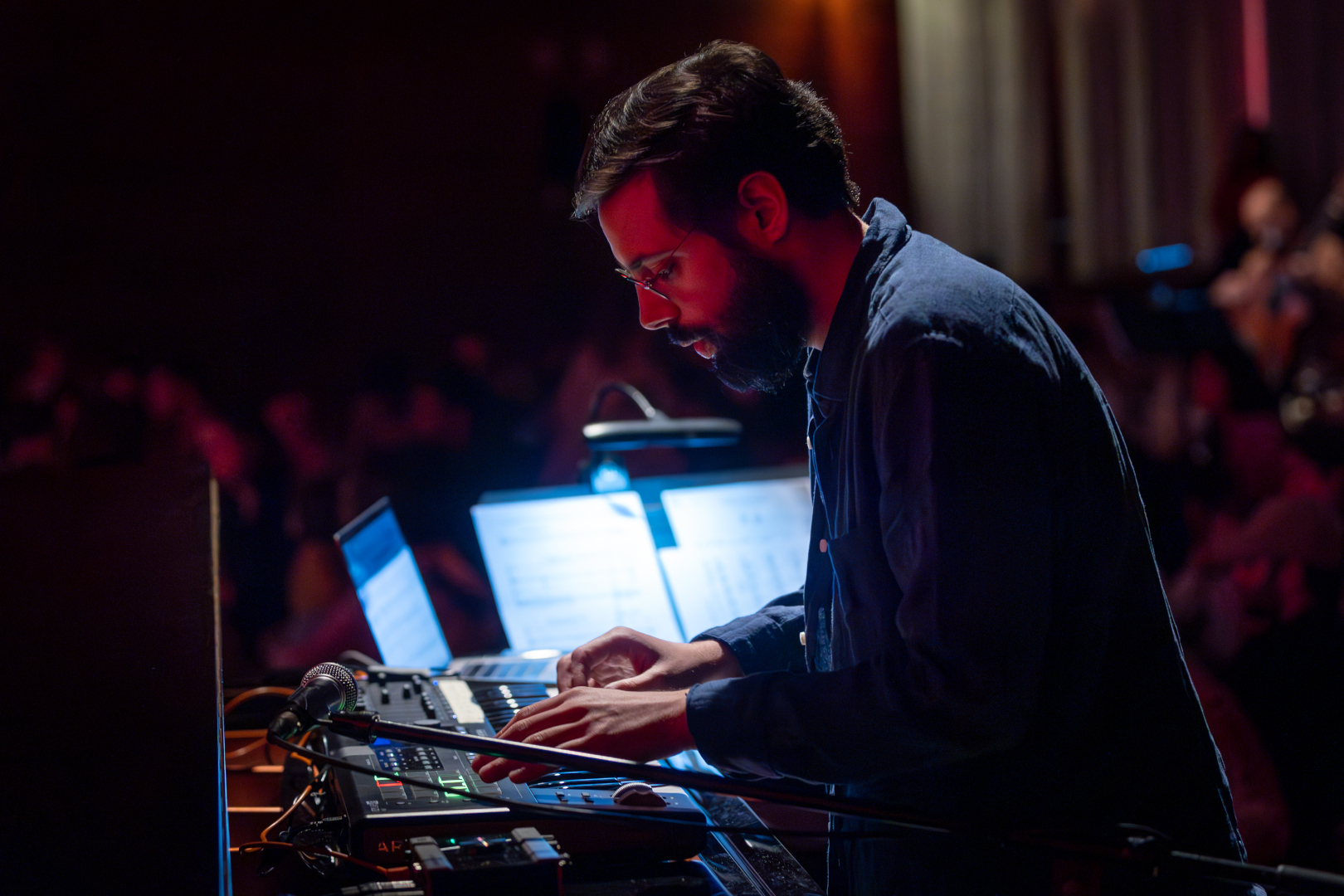
Sofia Adriana Portugal, on the leading vocals and percussion
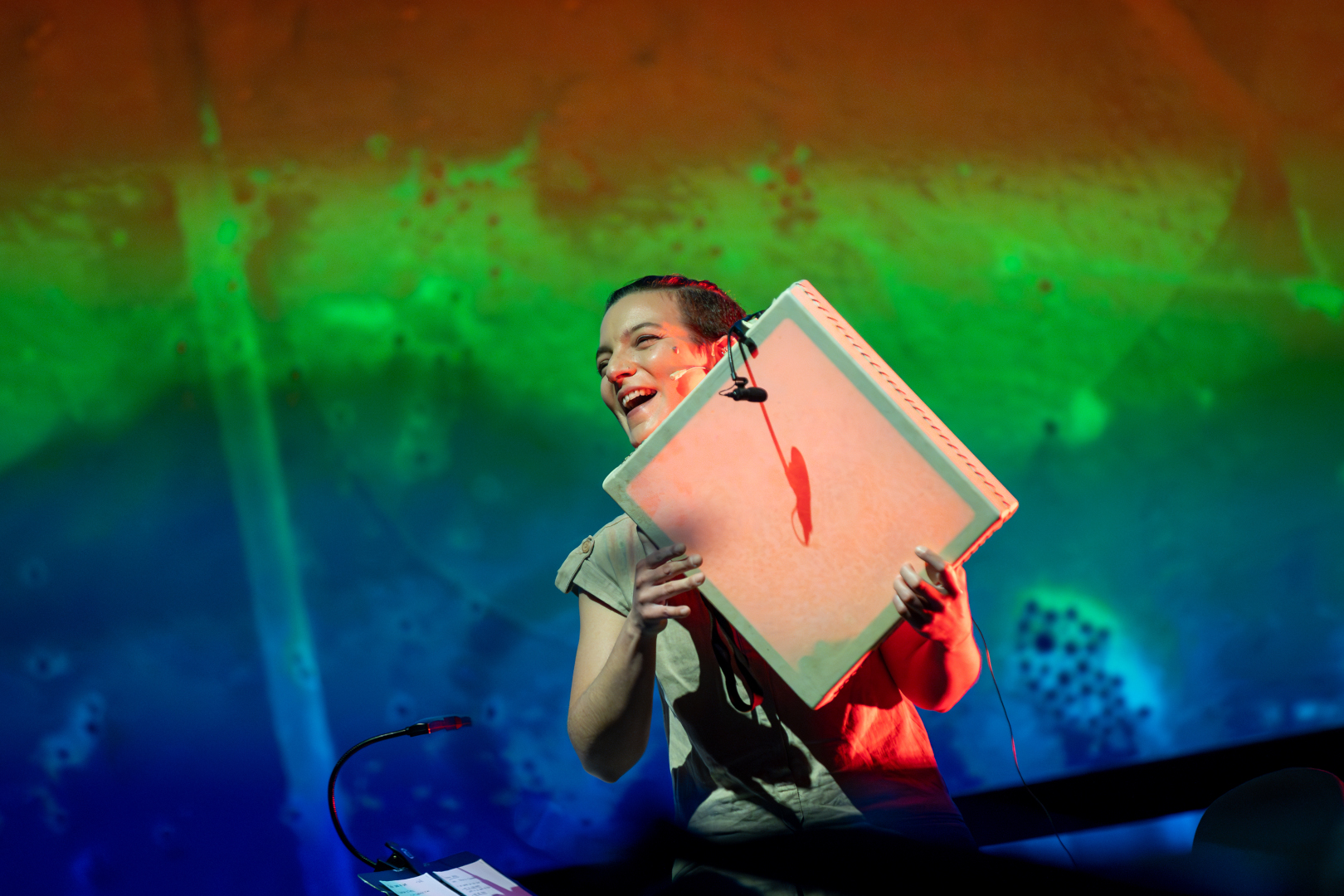
Portugal is a very small, yet marvelously diverse country. It’s no wonder that our traditional music is, itself, very rich and brimming with history and culture. When choosing which traditional songs to include in our concert, we made sure we had most of the territory covered, ranging from the islands to our inner- and northern-most areas, but also songs from different backgrounds. We opted for some well-known songs, such as Moda do Entrudo/Entrudo Chocalheiro (famously recorded by José Afonso), some others that very few people know of (such as the final lullaby, that was sung directly to Sofia by an old woman, who remembered it from her childhood), some from our Christian tradition, others with a clear Islamic or Pagan influence. We have work songs, worship songs, and festive songs, displaying the richness of our heritage. Here’s the setlist, with the indication of the song’s (presumed) origin:
- Estrela que vais coroar (Açores)
- São João (Beiras)
- Romance da Menina Cativa (Trás-os-Montes)
- Já Não Tece o meu Tear (Alentejo)
- Lavra, Boi (Minho)
- Alar da Rede (Algarve)
- Entrudo Chocalheiro (Beiras)
- Canção de Embalar (Douro Litoral)
Each of these songs was rearranged by ourselves, with a distinct sonic identity. Our music uses a lot of electronics, both live and tape, synths, and an expanded harmonic language. The original recordings from the 1950s and 1960s, in rural Portugal (and remember that, at the time, Portugal was a very poor country, many decades behind most of Europe), were used beside our own recordings, and all heavily edited and processed. We aimed for the somewhat difficult balance between being truthful to the tradition, and expressing our own individual voices. I feel that if tradition is not questioned, or if it becomes a fixed and dogmatic, it will very quickly die out. So we did try to have a different perspective.
Typically, on a concert for very young children, we use a story or narrative to wrap everything together and create a sense of unity and continuity. This time, however, we purposefully tried not to do that. Instead, we relied on the music itself and the abstract visuals, which blended colors, forms and movement, as the main driving forces of the show. The goal was to focus on what’s happening in the moment, and on the beauty of the sounds and images, not on trying to predict what’s going to happen next.
The layout was also unalike most concerts. The musicians were spread throughout the room. We used a stereo PA array system, but also four speakers around the audience. The goal was to immerse the audience in sound and color, while shifting their focus to different points in the room at different times, constantly inviting them to move or face another way. There were also interactive parts, where the audience (and the kids) played with us - simple instruments such as handbells or cowbells, but also using their voice and body as an instrument.
Quem Conta um Conto Acrescenta um Som was one of those rare projects where I learned a lot and had lots of fun at the same time. For me, as a portuguese musician who grew up studying (and loves) classical music, there’s an authenticity in traditional portuguese music that is unparalleled, and which proves as a very fruitful source of inspiring. I’m not sure why, and I don’t know if it matters. Is it because it captures the essence of being portuguese? Or because we associate it happy memories, such as the holidays, summer festivals, or important rituals from our lives? I’m not sure, but I do think it is a way forward, not backwards.
Hope to be back playing with these guys soon.

Best, Óscar
